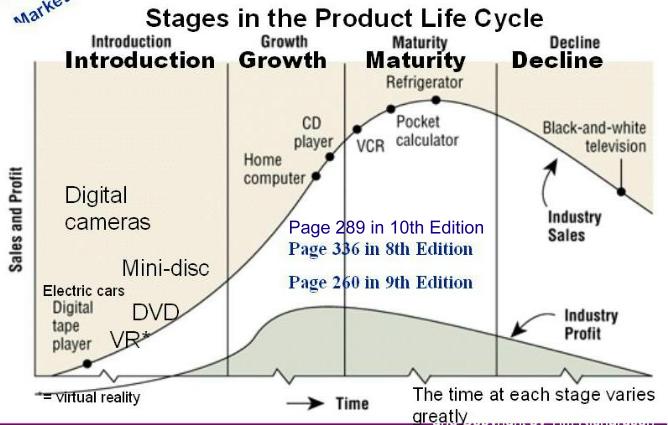Designers need to consider the whole product cycle of potential products, services and systems throughout the design cycle and beyond. Products may have an impact not only on the direct consumer but also on society at large and the environment.
An understanding of the product life cycle allows the designer to design a product with obsolescence in mind. Doing this at the design stage can potentially eliminate the effect of a product on the environment when it is no longer in use.
Product Life Cycle
Term: Is a tool for mapping out the four stages of a product’s commercial life: Launch; Growth; Maturity; Decline.
Key Stages of The Product Life Cycle
- Launch: There are slow sales and little profit as the product is launched on the market.
- Growth: The market gradually accepts the product, so diffusion starts and sales expand.
- Maturity: Sales peak but remain steady, so maximum profit is achieved.
- Decline: Market saturation is reached and sales start to reduce as well as profit.
- Encyclopedia of Business website on Product Life Cycle
- News article on the iPod peaking from – the Sydney Morning Herald
Activity: Find two products that are in each stage of the product life cycle and write a sentence describing why. One product must be new to the market and another a classic design. Put it on Padlet.
 |
| Article and image from the SMH |
Obsolescence
More longer version is on youtube.
Obsolescence Affects The Product Life Cycle.
Obsolescence is where a product or trend becomes obsolete or outdated and no longer used or needed.
- Reason why for many products the product cycle has shortened.
- include new safety features.
- include latest technology.
- trends in fashion or style fluctuate.
- ensure a continuing market.
- IB has identified 4 types of obsolescence.
Term: Planned Obsolescence – A product becomes outdated as a conscious act either to ensure a continuing market or to ensure that safety factors and new technologies can be incorporated into later versions of the product.
Term: Style (fashion) Obsolescence – Fashions and trends change over time, which can result in a product no longer being desirable. However, as evidenced by the concept of retro styling and the cyclic nature of fashion, products can become desirable again.
Term: Functional Obsolescence – Over time, products wear out and break down. If parts are no longer available, the product can no longer work in the way it originally did. Also, if a service vital to its functioning is no longer available, it can become obsolete.
Term: Technological Obsolescence – When a new technology supersedes an existing technology, the existing technology quickly falls out of use and is no longer incorporated into new products. Consumers instead opt for the newer, more efficient technology in their products.
|
|
|
Activity: Find one example of a product for each of the types of obsolescence.
Activity: Identify and describe one product (other than computers, phones, tablets or MP3 players) that have a shortened product cycle.
- Laptop computers are an intensely competitive market, with size and power being key issues. Whereas ball point pens meet the needs of the target market and still sell strongly.
Predictability of The Product Life Cycle
- Length of the product life cycle considering the effect of technical development
- Length of the product life cycle considering the effect of consumer trends including fashion – unpredictable
- Planned is predictable
Product Versioning/Generations
Product Versioning is offering a range of products based on a core or initial product market segments.
A company can maintain a pioneering strategy and consistent revenue flow by introducing new versions or generations of a product to a market. Apple uses this strategy effectively, creating multiple versions and generations of their iPod®, iPhone® and iPad® products.
Investopesia on versioning and advantages
Advantages and disadvantages for a company of introducing new versions and generations of a product
- Improved consumer choice: consumers can choose the version thats suits them.
- Improved consumer choice: can choose a budget level such as Quicken tax software
- Maximise profits for the company hopefully through increased sales.
International-Mindedness
The transition from a linear to a circular economy in the move towards sustainable societies has major implications for the ideas associated with product life cycle.
Theory of Knowledge
Design considers areas other than man in its thinking. Are other areas of knowledge confined to human influence and values?


